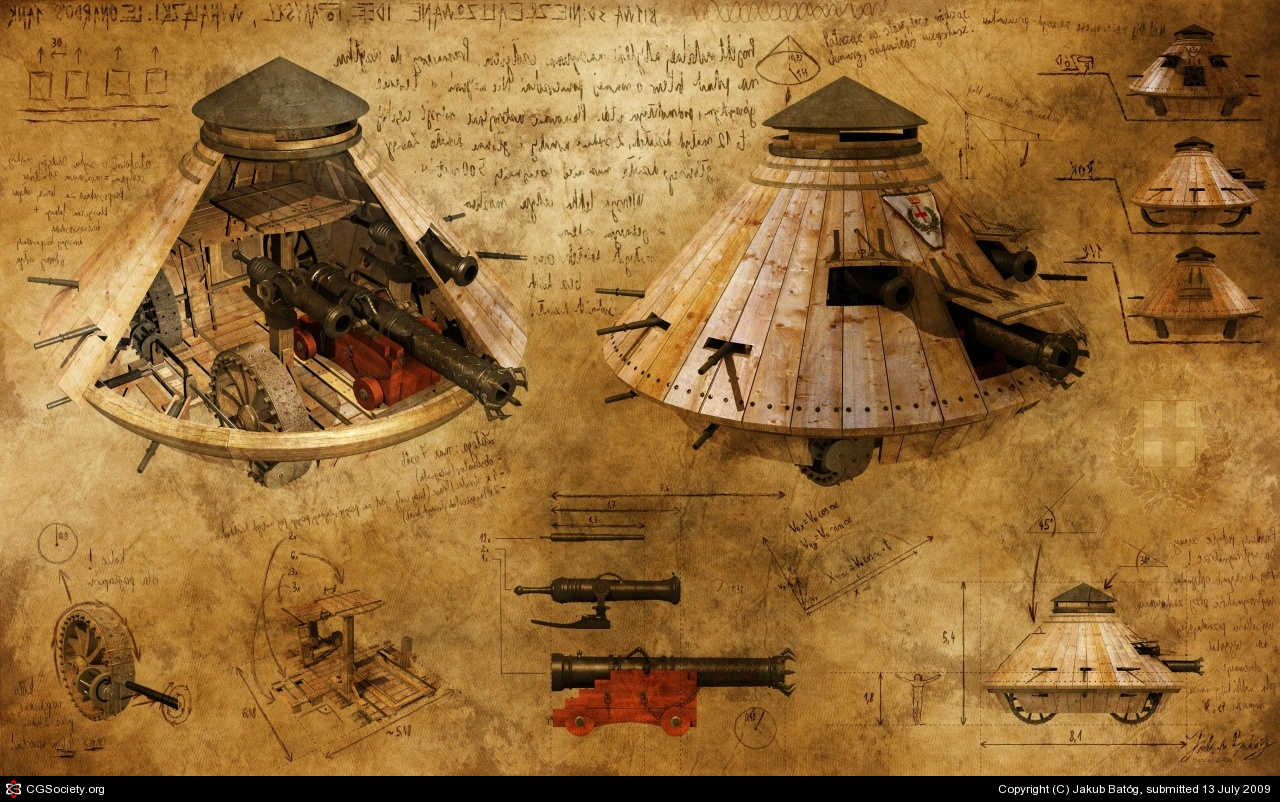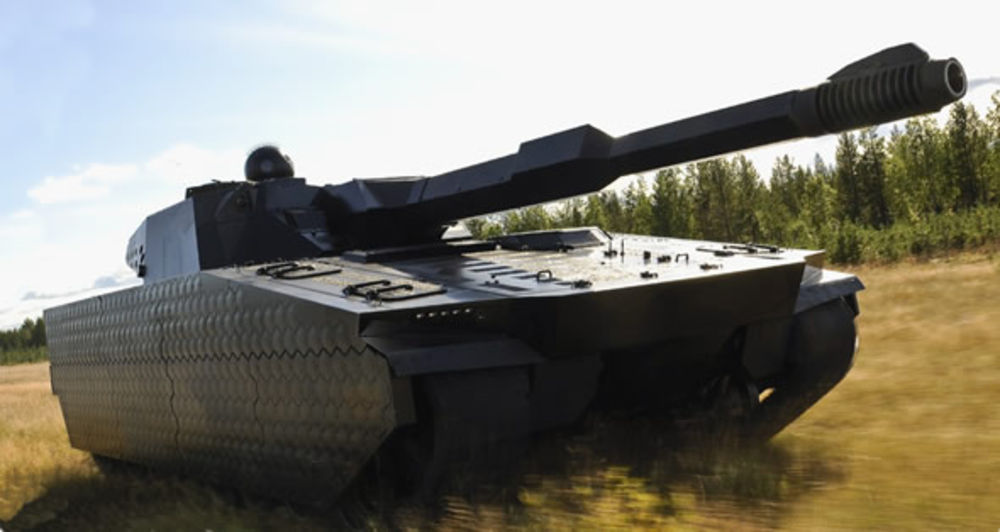As legend has it, when the first tanks shipped for the battlefield in crates for World War II, the outside of those crates read “tank,” because of the secrecy around the new technology.
The technology behind the new tanks was new, but the idea was already 400 years old.
Leonardo Da Vinci designed a tank-like vehicle in 1487, but it would take a few centuries of innovation before we could make something similar to what he imagined.
In fact, the first one was kind of a failure. We’ll come back to it, but first, Leo’s design.
Da Vinci’s Tank
When the Brits wanted to keep the production of their new vehicle a secret, they told the production employees that they were forging parts for water-carrying vehicles or wheeled water-tanks.
Da Vinci’s design was inventive, but the name he gave it was not as sexy as “tank.” He called it the Fighting Vehicle.
One could argue his design predates the modern tank, but it didn’t inspire it. His design looked more like a UFO with wheels because he took inspiration from turtles.
There were no metal plates on Leo’s tank. The structure was armadillo plates and llama hair.
In other words, it would have been stinkier than your average military tank, which is impossible. During his time, Leo’s tank did not see the light of day, but a group of modern engineers attempted to recreate it
The Mark I
Other versions of armored wagons came about after Da Vinci but were mostly proposals.
There was a 15th-century armored cannon used by the Hussites, a French design that never made it off the design table, and H.G. Wells’ Ironclads. Wells’ design was fictitious but inspirational.
In 1907, Benjamin Holt, an engineer in California patented a crawler tractor tread for farming. His idea went into tractor designs used in the Great War, which we used for moving artillery into position.
It was that design that led to the first tank prototype, Little Willie. The goal was to make a vehicle that could overcome trench warfare and uneven land.
Fosters of Lincoln, an agricultural vehicle company, started work on Little Willie in 1915. The first design couldn’t cross trenches, so they resigned willie and came up with Big Willie, a more adept tank.
By 1916, production began on the Big Willie design, renamed the Mark I.
WWII
By the time World War II hit, use of tanks was as critical on the ground as dogfighting was in the air. The Germans had been developing tanks despite the treaty of Versailles, giving them an unbeatable edge when they finally attacked Poland in ’39.
By 1943, the Americans had the Sherman tank, the Germans their Tiger. The Eastern front of the war would witness a battle involving 23,000 tanks.
By the end of the war, the collective armies of the war built around 290,000 tanks.
In today’s land battles, tanks are one part of our armored ground strategy. They are still not indestructible, but we couldn’t win battles without them.
In the future, tanks will have cloaking technology and defense systems we can only imagine. Don’t laugh, Science Fiction inspired tanks once before. It will happen again.
Sources: History.com, The Telegraph




